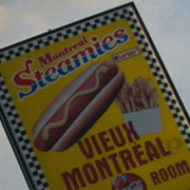If you were to start over, how would you build a university from scratch? Would you keep disciplines, tenure, professors, students, and degrees? What would you keep from the current system?
Taking a break from the End of the Newspaper, yesterday’s New York Times ran an End of the University op-ed from Mark Taylor, a religious studies prof at Columbia (hat tip to Cathy Davidson for the link). To be sure, the current economic downturn/depression and its attendant job crunch have added some spice to the “crisis of the humanities” rhetoric so popular among American professors and newspapers. The piece is a real split for me: half of it is stuff I have been thinking and half of it strikes me as complete lunacy.
He’s absolutely right about universities relying on grad students as revenue sources and sources of cheap labor; but he’s insane to suggest that professors won’t simply suffer the same fate if tenure is eliminated (for a taste, ask UK professors about what the Research Assessment Exercise has done to higher education).
He’s right about the need to encourage a general curiosity among students and faculty; but the demand for “relevance” is tired and pathetic. Usually, this is coupled with an appear to “real world” pragmatism, but intellectuals in the professions know the importance of so-called basic research. Ask doctors what industry imperatives do to medicine; ask communication engineers what happened with AT&T shut down Bell Labs.
The place where he is spot on, however, is curriculum. Few departments are true intellectual communities (ours more than many, and ours is an interdisciplinary department). Most liberal arts majors have as much applicability as the next, and even in many of the sciences and professions, the model of curriculum has little to do with how or what students actually learn. The theory is that it is all cumulative and stepped, but the reality is that even in highly regimented curricula, students retain little from one class to the next. The “cumulative” effect is not the learning objectives covered in assignments and test but the cumulative effect of being immersed in a subject over a long time. At the undergraduate level, this would be relatively easy to do. At the graduate level, it would be much more difficult unless everyone abolished departments at the same time–people with interdisciplinary degrees are only rarely hired into traditional disciplines, which are mostly interested in gatekeeping.
Either way, it seems to me that programs and departments are generally carried on by a small core of passionate people who keep them alive and injected with energy. When those people leave or take on new interests, the curriculum remains and in some places, become a numb and foolish imperative (“we have to hire a person to teach X course” as opposed to hiring the best possible person in an area the current faculty find interesting and important).
Taylor’s piece is full of radical self-posturing (let’s see him be the first in line to give up tenure at Columbia–he doesn’t have to keep it) which occludes the simplicity of his curricular suggestion. Variations have already been tried at many schools, from Chicago’s committee system to the sprawling interdisciplinary programs on many Canadian campuses. Some work better than others, to be sure, and there are lots of problems to solve at both undergraduate (enrollment management and planning? class size, pedagogy? mentoring?) and graduate levels (funding? supervision? academic community? placement? prerequisite skills like language and math?) but the idea is a venerable postwar proposition. It’s at least as old as the move from “ology” to “studies” in the naming of fields, and is worth looking into for inspiration as we seek to build our schools, even in a moment (or an age) of diminished expectations.
